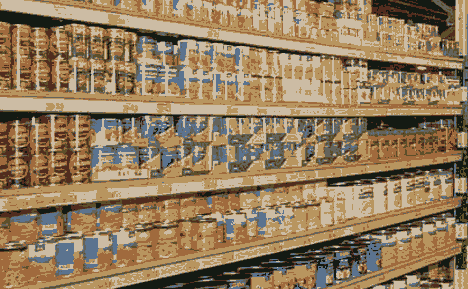Canned Food Shelf Life Studies
Canned Food will last much longer than you may realize. The ‘Use-by’ dates that are posted on cans are confusing and many people incorrectly associate them with shelf life.
In fact the following studies prove that canned food can least for a very long time!
The date on the can does not mean it’s the date at which the food inside will suddenly turn into mush. If you think about it, the professional canning process ensures that all bacteria has been cooked out of the product, and then the can itself is sealed which ensures that nothing can get inside to harm the condition of the contents.
The only thing slowly changing in the can over time is freshness, flavor, and texture.
Canned Food Study One
A Food and Drug Administration Article about a shelf life test that was conducted on 100-year old canned foods that were retrieved from the Steamboat Bertrand, indicates surprising results.
Among the canned food items retrieved from the Bertrand in 1968 were brandied peaches, oysters, plum tomatoes, honey, and mixed vegetables.
In 1974, chemists at the National Food Processors Association (NFPA) analyzed the products for bacterial contamination and nutrient value.
Although the food had lost its fresh smell and appearance, the NFPA chemists detected no microbial growth and determined that the foods were as safe to eat as they had been when canned more than 100 years earlier.
The nutrient values varied depending upon the product and nutrient. The chemists reported that significant amounts of vitamins C and A were lost; but, protein levels remained high, and all calcium values ‘were comparable to today’s products.
NFPA chemists also analyzed a 40-year-old can of corn found in the basement of a home in California. Again, the canning process had kept the corn safe from contaminants and from much nutrient loss. In addition, the kernels looked and smelled like recently canned corn.
“According to a recent study cosponsored by the U.S. Department of Agriculture and NFPA, canned foods provide the same nutritional value as fresh grocery produce and their frozen counterparts when prepared for the table. NFPA researchers compared six vegetables in three forms: home-cooked fresh, warmed canned, and prepared frozen. ‘Levels of 13 minerals, eight vitamins, and fiber in the foods were similar’. In fact, in some cases the canned product contained high levels of some vitamins that in fresh produce are destroyed by light or exposure to air.”
—————————
Best Manual Can Opener – Lightweight Stainless Steel
—————————
Canned Food Study Two
A canned food shelf life study conducted by the U.S. Army revealed that canned meats, vegetables, and jam were in an excellent state of preservation after 46 years.
(Update: the original source link for this study is no longer available)
Canned Food guidelines given by the U.S.D.A.
Use high-acid canned food (fruits, tomatoes and pickled products) in 18 to 24 months.
Use low-acid (meats and vegetables) in two to five years.
Canned food storage is a viable choice among your diversification with dry goods and other types of food and packaging, and will last much longer than what the date label indicates. When it comes to food storage, we recommend a balanced approach of foods, and to practice food storage rotation so that you’re eating what you store over time.

